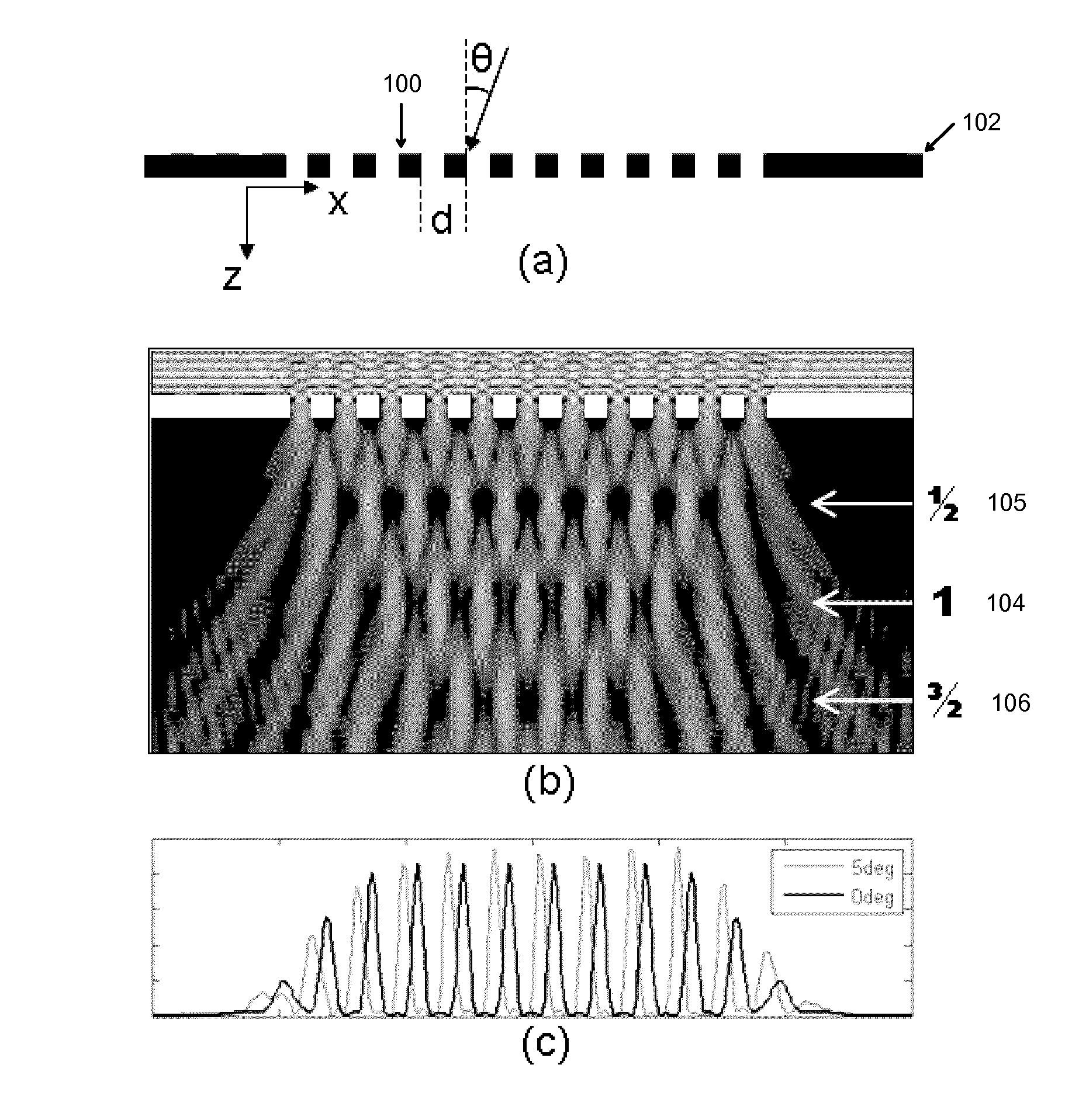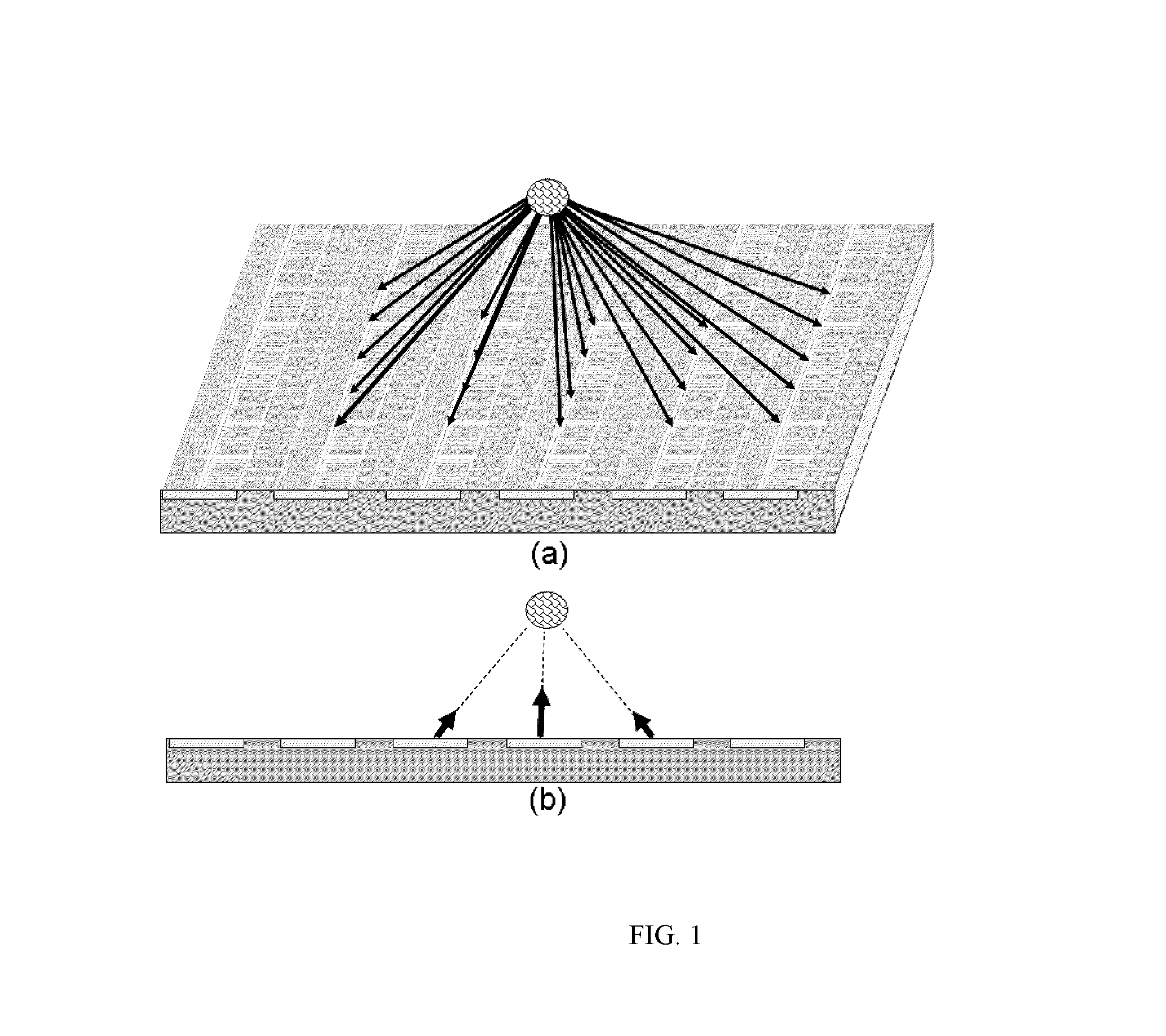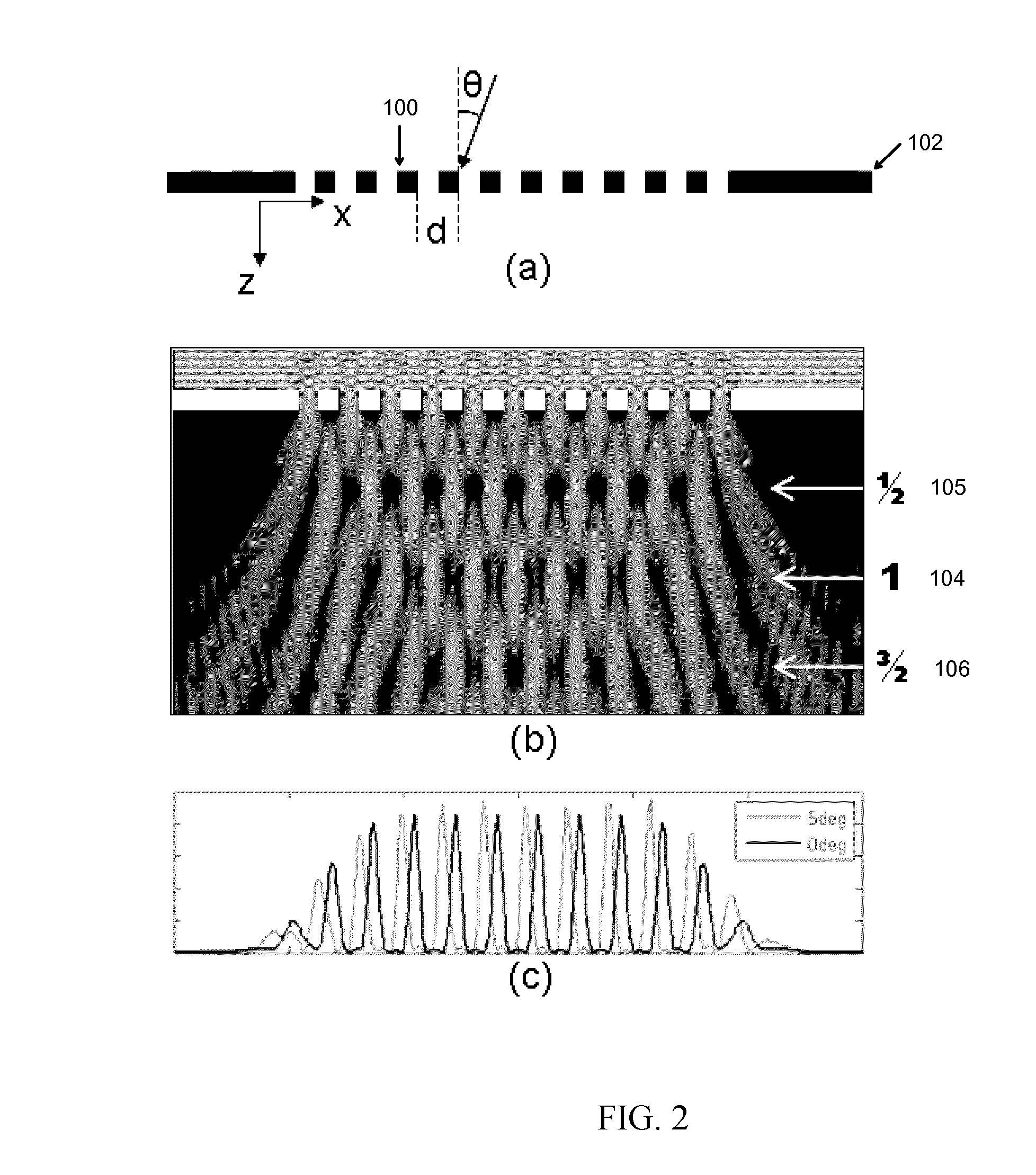Light field image sensor, method and applications
a light field and image sensor technology, applied in fluorescence/phosphorescence, instruments, radioactive control devices, etc., can solve the problems of inability to accurately determine the plenoptic function of any practical scene, the intensity map cannot capture incident angle, polarization angle, other properties of light rays passing through the image plane,
- Summary
- Abstract
- Description
- Claims
- Application Information
AI Technical Summary
Benefits of technology
Problems solved by technology
Method used
Image
Examples
example 1
Using Light Field Data For Refocusing And Range Finding
[0099]One way to constrain the problem described above is to assume that s is the result of visual information at a particular focal depth, and finding the best estimate for what the image should look like if the detected light originated only in that plane. s now describes a plane with dimensions X×Y, such that s has X*Y=N2 entries. Since this is now actually less than the size of r, A is still not square, but is now “wider” than it is “tall” such that the problem is now-over defined. By using a pseudo-inverse, usually defined for over constrained systems as (ATA)−1AT, one can extract a best fit for s given r. If there is a reasonably good fit (as there will be if the focal plane chosen is the correct one), then this approach will yield a good approximation of the actual object scene. In particular, if the approximation of s is:
s′=pinv(A)r,
where pinv(A) is the pseudo-inverse of A, and given that A was chosen such that
r=As,
the...
example ii
Using Light Field Data For Extraction Of Sparse Fluorescent Sources
[0103]Another exemplary application pertains to imaging the three dimensional structure of fluorescing cells in tissue. Since the goal of such an application would be to be able to independently quantify the fluorescence of multiple cells at different focal planes, refocusing is not an appropriate approach. However, if one adds the two additional constraints: i) that all entries in s must be strictly positive (there is no such thing as negative fluorescence), and ii) that the fluorescent sources are relatively sparsely distributed in the volume being imaged, one may assume that the number of fluorescent cells is smaller than N2, the number of pixels. If this holds true, then one can find each of these sources iteratively and in order of brightness as follows:
[0104]a) correlate r with the expected response to each possible entry in s as:
c=rAT;
[0105]b) find the index, j, of s that correlates best with r (index of the m...
PUM
 Login to View More
Login to View More Abstract
Description
Claims
Application Information
 Login to View More
Login to View More - R&D
- Intellectual Property
- Life Sciences
- Materials
- Tech Scout
- Unparalleled Data Quality
- Higher Quality Content
- 60% Fewer Hallucinations
Browse by: Latest US Patents, China's latest patents, Technical Efficacy Thesaurus, Application Domain, Technology Topic, Popular Technical Reports.
© 2025 PatSnap. All rights reserved.Legal|Privacy policy|Modern Slavery Act Transparency Statement|Sitemap|About US| Contact US: help@patsnap.com



